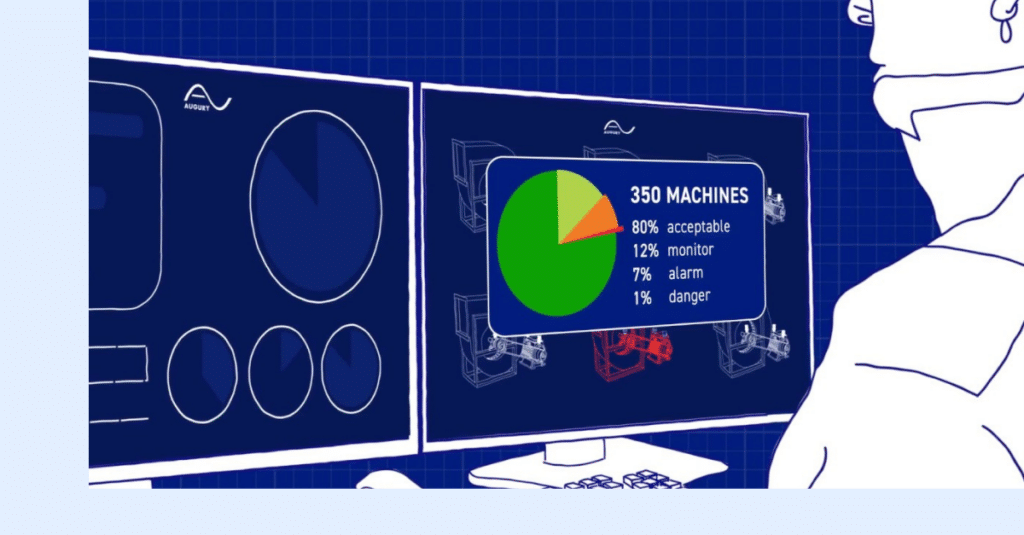
Increasing revenue by maximizing productivity sounds like a no-brainer, but actually getting it done can be another story. Implementing machine health to monitor your assets can drive real productivity improvements and increase your revenue as a result.
Continuous Monitoring for Continuous Productivity
Ask any manufacturing leader if they would like to improve their overall productivity, and chances are, you will hear a resounding “yes.” That’s because most manufacturers today are dealing with more demand than they can fulfill. Fixing this problem would make a huge impact on their operations and bottom lines.
When it comes to finding a solution, the first instinct of many companies is to add more machines to the production line. However, even if a business had enough money to buy as many as it wanted, this would in no way guarantee they would get to where they needed to be. In fact, that approach could end up causing more problems than it solves by creating a fleet that can’t be sustainably managed. Instead, focusing on how to maximize the reliability of existing equipment can be a more effective, sustainable way to optimize production.
It’s now possible to ensure that machines are running at their optimal levels while eliminating unnecessary downtime.
Ten to fifteen percent of losses in productivity are due to mechanical issues. This is because the traditional approach of scheduled maintenance can’t catch emergent issues before they result in unplanned downtime. When a machine goes down, manufacturers experience not only lost productivity, but also product and raw material waste. Even if manufacturers prevent outright failures, they might overlook machines running less than optimally, which can negatively affect product quality.
Luckily, this approach to maintenance is not the only available strategy. Thanks to machine health, teams can maximize the capacity of their production lines by moving to preventive and predictive maintenance. With Augury’s machine health solutions, it’s now possible to ensure that machines are running at their optimal levels while eliminating unnecessary downtime.
Augury’s continuous monitoring solutions, powered by AI-driven insights, catch problems before they happen and guide you toward a repair strategy that can save downtime hours, labor costs, and waste. Production lines will never run 100% of the time, but with Augury, they can run at 100% optimization — unlocking productivity like one customer who reported gaining four months of extra capacity while using our solution.
How Machine Health Monitoring Can Help You Maximize Production
So what does this approach mean for your productivity and revenue? Let’s break it down:
1) 24/7 monitoring sees what humans can’t.
Continuous monitoring makes it possible to catch problems before they happen. Real-time machine health data provides a complete picture that allows you to adjust production plans to maximize output and avoid unplanned downtime instead of following calendar-based maintenance schedules.
But 24/7 monitoring isn’t useful for only planning downtime — it can also increase your uptime. Augury’s insights help you see changes in your assets that don’t necessarily lead to system failure but could cause suboptimal performance. Detecting something as subtle as misalignment or imbalance can help improve your machine’s performance and help you fix an issue before it becomes a production-halting problem.
2) AI increases the impact of 24/7 monitoring.
While continuous monitoring can provide you with lots of data, you still need someone to sift through and analyze it in order to catch problems. Manual oversight might be feasible with only one or two production lines, but the more you add, the more untenable that approach becomes. Enter AI.
AI can analyze large quantities of data, send automated alerts, and help guide your skilled experts to solve machine issues. AI also learns from problems that arise and solutions that are implemented, which means if the same issue pops up on another production line, the best approach is already known. The more AI learns, the faster fixes are implemented and the more productivity increases across every production line.
AI finds problems before they start and prevents the effort it takes to look for problems that don’t exist.
AI also provides accurate visibility into your machines. Recent research with one customer showed almost 20% of Augury’s machine health alerts never crossed a threshold, meaning those problems would never have been found until it was too late. Threshold-based systems often trigger false alarms, even when a machine is healthy, but the customer also reported Augury reduced false alarms by 59%. AI finds problems before they start and prevents the effort it takes to look for problems that don’t exist.
3) AI’s insights go beyond your critical assets.
With the combination of continuous monitoring and AI, you can improve the maintenance of all your assets. This might not seem like a big deal at first because the greatest amount of unplanned downtime is caused by critical assets. However, the impact of poor performance, even in areas with greater redundancy, can be considerable.
You can improve the performance of your assets throughout an entire plant.
Supporting assets tend to receive less maintenance and, as a result, fail more often. While each failure may lead to only 15 minutes of downtime, you can have a real headache on your hands when they happen often enough.
In a more traditional environment, this would be seen as the normal cost of running a manufacturing business. However, with machine health, you can improve the performance of your assets throughout an entire plant. This holistic approach allows for optimal performance of existing equipment, which can have a major impact on your bottom line.
Related: Learn more about how to optimize your maintenance budget with machine health for non-critical assets.
When it comes to maximizing manufacturing productivity, rather than adding machines ad infinitum, focus on doing the most with what you have now. While more machines might help you improve your production rates, if that greater number is only operating at partial capacity, you may just be buying yourself more machine problems than production solutions.
When you’re ready to optimize your current assets and maximize your production, reach out to Augury.




